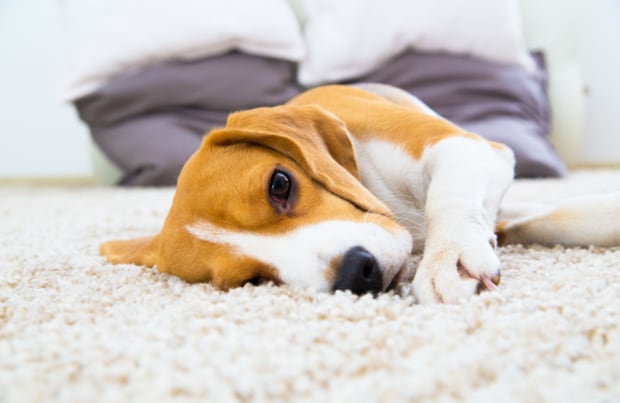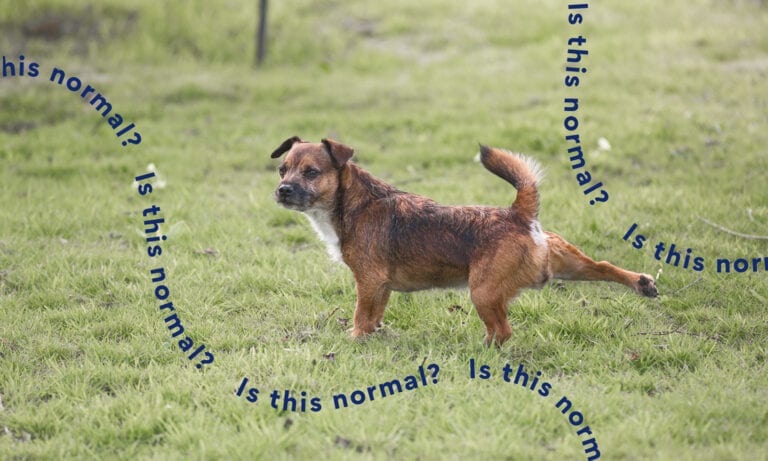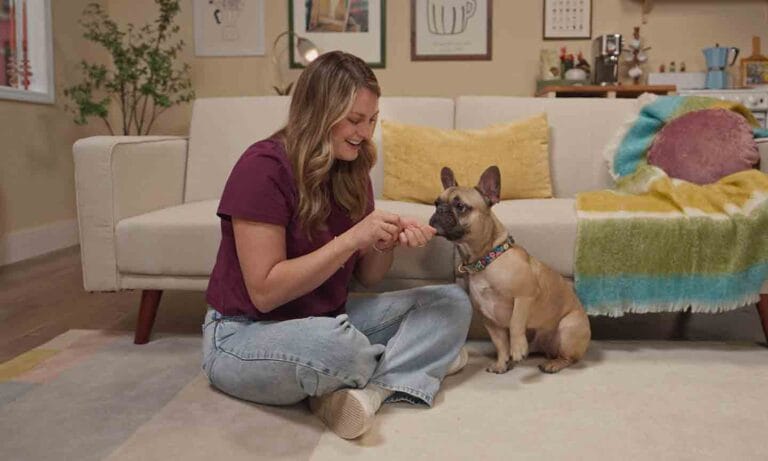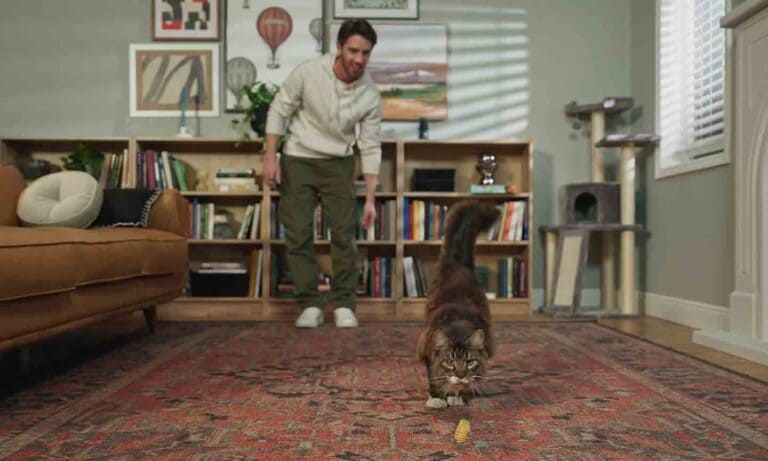A stunning rug can be both a focal point in your home and a cozy place to cuddle with your pets. However, even nice, well-trained animals can wreck carpeting. Sharp claws, muddy paws, potty indiscretions, vomit, hairballs and odors can quickly turn that focal point into an eyesore.
“You have to be realistic,” says Chicago-based interior designer Nan Ruvel, who has two dogs and two cats. “Animals are animals. You cannot expect that they’re not going to have accidents.”
Before you invest in any floor covering, make sure it can stand up to abuse from your fur babies.
Finding the Right Rug
Many types of floor covering can work in a home with pets, but some rugs require more maintenance. Look for rugs that offer stain resistance and durability, Ruvel says. Rugs with tight dense pile made of wool or stain-resistant acrylic (which is similar to wool) can hold their own with animals, she says. And the fibers are easy to clean at home.
While they may look fragile, tightly-woven antique rugs have stood the test of time and can stand up to both cats and dogs, Ruvel says. She advises pet owners to look for rugs with a high-knot count. Durable commercial carpeting can also work well in homes with pets, she says.
No matter which type of rug you prefer, dirt and accidents are inevitable, so it makes sense to pick a rug that can conceal the evidence. A rug with a busy pattern can hide a multitude of sins, while solid-color rugs are riskier, Ruvel says.
While not suitable for all rooms, carpet tiles can make sense for pet owners, says Ili Hidalgo-Nilsson, co-owner of Terracotta Design Build, a residential design firm. If your pet messes up a tile, you simply pull it up and replace it with a new square. Carpet tiles “are great in mudrooms, kitchens, basements and kids’ bedrooms,” she says.
Light-colored rugs can work but require more frequent maintenance, Hidalgo-Nilsson says. To keep your rug looking beautiful, she recommends pretreatments, which are stain-guard treatments that may be offered by the manufacturer or rug dealer prior to delivery. If that’s not available, try a stain repellent product.
Rugs and Carpeting to Avoid
As a pet owner, you can scratch rugs made of natural fibers off your list. While you may love the look of a sisal rug, your cat is likely to see it as a really cool scratching challenge. Because they appeal to cats and are hard to clean, Ruvel does not recommend either sisal or jute rugs.
Shag carpeting and high-pile rugs are also difficult to clean and maintain, she says, while Berber rugs with loose loops can be a problem (animals can get their claws caught in the loops).
Ruvel also steers clear of wall-to-wall carpeting. Area rugs are better, she says, because they can be cleaned at home or, for stubborn stains, sent out for a professional cleaning.
Cleaning and Caring for Your Floors
To keep these rugs looking good, vacuum once a week and spot clean stains, Ruvel says. If your pet has an accident on the rug, carefully pick up the mess as best you can, blot the spot with a clean, dry white rag to absorb any moisture, then use a little water to see if the stain can be removed naturally, she says. If that does not work, try a pet stain cleaning product, a mix of soap and water, or clear vinegar.
And don’t forget to add padding with a moisture barrier, Ruvel says. If your pet goes on the rug, a pad with a moisture barrier will stop the urine before it seeps through to the padding. If the urine soaks into the pad, you’ll be stuck with a lingering smell and your pet may return to the same spot again and again to leave her signature fragrance, Ruvel says.
“The most important thing is to have a moisture barrier pad underneath” the rug, she says. A pad also protects the floor under the rug.
How frequently to have your rug cleaned by a professional cleaning company is open to debate. Ruvel says a pro cleaning is needed only when the rug is visibly stained or smells. If you have a valuable heirloom, make sure the cleaner has experience with antique rugs, she says.
Hidalgo-Nilsson recommends a cleaning once a year. “Change the (rug) pads every time you have it professionally cleaned,” she says.
Rugs can be costly so take your time and shop carefully, Ruvel advises. Don’t fall in love with the first kilim that catches your eye. In addition, buying a rug comes down to knowing and honoring your personal style while taking your pets’ behavior into consideration, Hidalgo-Nilsson says.
“Get the rug that works for your room, that you like and can afford, but know your pets,” she says. “If your cat loves to tear up the yarns, stick to low pile cut yarn. If your dog is not potty trained, get darker colors and train your dog. Other than that, enjoy your pets.”

Lynne Miller is a freelance writer, communications consultant and dog lover. A Chicago native, Lynne lives with her family in Brooklyn, New York.
Share:









